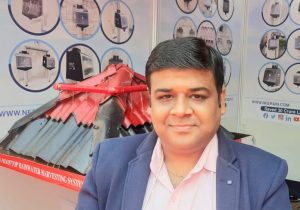
Photo Courtesy : The Interview World
NeeRain, an innovation-oriented startup, tackles the groundwater crisis through the use of local, decentralized rooftop rainwater filters. These filters empower individuals to lead water-secure lives. Furthermore, the startup holds patents for a range of rooftop rainwater filters that are both easy to use and cost-effective. Their goal is to harvest rooftop rainwater in every habitat.
Through extensive research, NeeRain’s team has achieved a technological breakthrough in rooftop rainwater filters. This advancement is bringing joy to millions of people worldwide by providing a sustainable solution to water scarcity.
As a young startup, NeeRain focuses on the cause of rooftop rainwater harvesting. They believe that the populace receives rooftop rainwater freely. However, much of it goes to waste. On this concept, NeeRain offers patented technologies to capture every drop of rainwater, allowing it in daily activities or diverting to recharge groundwater sources.
In an exclusive interaction with The Interview World, Naishal Shah, Co-founder and CEO of NeeRain Pvt. Ltd., emphasizes the startup’s mission to combat groundwater depletion. The company aims to achieve this by offering an affordable system to capture and redirect rainwater to aquifers. Here are key excerpts from his insightful interaction.
Q: What features does your rainwater harvesting system incorporate, and how does it contribute to the overall groundwater sustainability?
A: Rainwater is freely available during monsoon. However, the water we receive goes down to drains. Here, we provide a technology that enables people efficiently filter the rainwater and direct it towards the borewell or tank, eventually recharging groundwater. Our advanced technology employs a two-stage water filtration system. Once filtered, all the water can either enter the borewell or the tank. Remarkably, a 1000-square-foot roof can yield approximately 50,000 to 60,000 litres of water in just one rainy season in places like Delhi and Ahmedabad.
If we shift our focus to regions like Kerala or Mumbai, a 1000-square-foot roof has the potential to provide an impressive 2-3 lakh litres of water in a single rainy season. Currently, a significant portion of this water is either wasted, blocked, or eventually drains into rivers and seas. By implementing a simple filtration process, we can redirect this water directly into the borewell and tank, storing valuable rainwater. Furthermore, channeling rainwater through the borewell contributes to an increase in groundwater levels.
The water filtered through our system is exceptionally clean, and its introduction into the groundwater does not lead to deterioration. Notably, rainwater captured directly does not exhibit hardness or Total Dissolved Solids (TDS). Considering the alarming rise in groundwater depletion, directing rainwater to the groundwater directly presents a practical solution to elevate groundwater levels and address this urgent concern.
Q: What is the cost estimate for implementing a rainwater harvesting unit suitable for a 1000 sq. feet rooftop area?
A: The cost for our rainwater harvesting unit is Rs. 2950. One can complete any additional small and heavy plumbing work within a budget of Rs. 10,000. Our system boasts a lifespan of 10 years, and the maintenance is hassle-free with a simple filter removal and washing process, eliminating any recurring costs. You can easily manage this routine maintenance by hiring your local plumber, as no special technical skills are necessary for setting up our rainwater harvesting unit.
Having filed for a patent in 2018, we successfully obtained approval in 2020. To date, we have already installed over 10,000 units, actively promoting the importance of rainwater harvesting and groundwater recharge. We remain committed to spreading this message, encouraging more people to take an interest in sustainable water management. Remarkably, we have received zero complaints about the performance of our products.
Q: Can you provide supporting data or evidence to substantiate the claim that 30 crore liters of water have been saved over the course of the last 2 years?
A: Certainly, all the data is at our disposal, categorized by states and cities based on the deployment of rainwater harvesting units. For instance, in Delhi alone, where we’ve implemented these units, capturing 500 mm of rainfall during a season can result in saving a substantial 50,000 litres of water. We’ve meticulously collected data from households in Delhi, supporting our assertion with accurate figures.
As a result, the harvested rainwater ensures that clean water percolates into the ground, safeguarding water quality and preventing contamination in the process. This approach aligns with our commitment to sustainable water management.
Q: What underlying technology powers your system?
A: Our system operates based on gravity, eliminating the need for electric power or any additional mechanical devices. The system incorporates two-stage filters: a 400-micron net for the initial stage and a 200-micron net for the second stage. In the first stage, larger particulates are filtered, followed by the filtration of smaller particulates in the second stage. This sequential process ensures that the water entering the ground is thoroughly purified. As a result, your water resource remains untainted, and rainwater is effectively conserved.
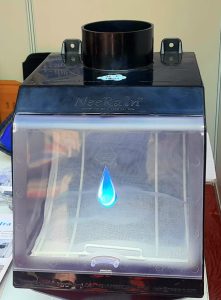
Photo Courtesy : The Interview World
Neerain is proud to republish this blog for spreading awareness about situation of water, for our stake holders. Credit whatsoever goes to the Author.
This blog is published by:
The Interview World
We would like to spread this for the benefit of fellow Indians.
Publish On: 23, January, 2024

 Photo Courtesy : Pune Pulse
Photo Courtesy : Pune Pulse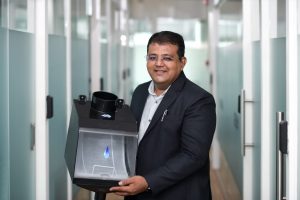
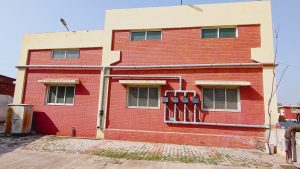 NeeRain devices collect rainwater from rooftops and it is used to recharge borewells.
NeeRain devices collect rainwater from rooftops and it is used to recharge borewells.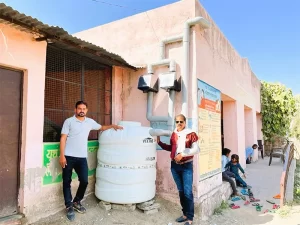 NeeRain can also be used to collect rainwater in drums or other storage structures.
NeeRain can also be used to collect rainwater in drums or other storage structures.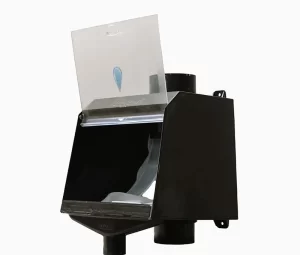 A non-electric device with an ABS filter, NeeRain, can last up to 25 years.
A non-electric device with an ABS filter, NeeRain, can last up to 25 years. NeeRain devices installed at a commercial establishment.
NeeRain devices installed at a commercial establishment.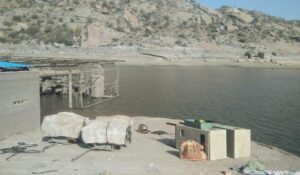 Photo courtesy: Rudra Pratap
Photo courtesy: Rudra Pratap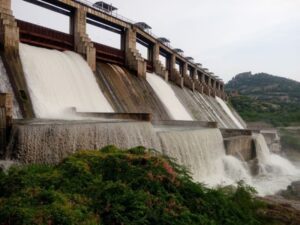 Photo courtesy: Holidayride
Photo courtesy: Holidayride